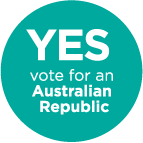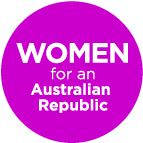(1)
Vicky Marquis
‘When we have women being brought before a male judge and a male jury, it cannot be said that is an ideal position in which to place a woman in order to encourage her reformation (2)
For more than 100 years in Australia, women have been lobbying for equal rights. These rights have not been achieved, despite international, national and state human rights and anti-discrimination legislation.
Women remain under-represented in decision-making positions, are the majority of the secondary labour market, their skills in both paid and unpaid work are inadequately recognised, and paid work for women with family responsibilities remains problematic. Women always perform many more hours of unpaid work than men whether or not they are in the labour market. Women are the majority of sole parents, are the poorer after divorce, and the most vulnerable to sexual and other forms of violence against them, yet few of these problems are recognised as human rights issues.
In this context, the current republican debate has significant implications for women’s equality and must be widened to involve input from the community. To date, the debate has been largely defined and determined by people involved in international and public law, by politicians, members of the judiciary and media commentators, the majority of whom are male.
If the Constitution is to be changed, women must be in a position to influence its equality provisions in a way which was denied to them in 1901. We cannot take for granted that any change will benefit women because we are not in the decision-making structures in large enough numbers to ensure women’s rights will be protected.
Some questions for us are: what sort of guarantees would protect human rights, and how can the equality of disadvantaged or excluded groups be advanced through Constitutional change?
These questions were crucial for Canadian feminists in the 1980s, who lobbied the Government to improve the effectiveness of the Canadian Bill of Rights as it had been interpreted by the courts. Their activism, which was assisted by federal government policy to fund particular interest groups, is relevant to the current political climate in Australia.
Canadian women succeeded in improving guarantees of equality in the
Canadian Charter of Rights and Freedoms. To strengthen that commitment, they established the Women’s Legal Education and Action Fund (LEAF) to sponsor test cases based on the new Charter. These were begun the day the equality guarantees came into effect.
Their experience raises a number of questions about the effectiveness of human rights legislation for women in Australia, and whether there is a need for a different approach to achieving equality here.
Implications of the Republican debate for women
In 1992 I attended a conference in Canberra on ‘Australia and Human Rights: Where to from Here?’ Mary Eberts, a keynote speaker at the conference and a Canadian lawyer, was one of the women who had been instrumental in lobbying for equality guarantees in the Canadian Charter of Rights and Freedoms. Eberts pointed out that Constitutional decisions of great significance to women are made by men, without notice to women, without consultation with them, and in the absence of any essential awareness of women’s interests. It sounded familiar.
Women’s advocacy role in Canada
It was the need for change in Canada in the early 1980s, which led women to fight to reshape the law on equality.
In the 1970s legal support for women’s rights was still tenuous. The Canadian women’s movement wanted to establish a break from the courts’ failure to support women. The history of the common law was a history of courts denying equality to women and the Canadian Bill of Rights, introduced in 1960, had been a dismal failure for women. This was because the language of the equality protection was too narrow to support claims women were bringing forward. With growing expectations for equal treatment, women wanted not only a voice but also involvement in the decisions that affected their lives.
When the text of the proposed Charter of Rights and Freedoms was tabled in the House of Commons in 1980, it repeated exactly the language of the earlier Bill of Rights. Canadian women became very active to strengthen the Charter’s guarantees of equality.
The women’s movement promoted public discussion and fostered activity through dozens of groups: women’s centres, refuges, rape crisis centres and union caucuses. Advocates for Aboriginal rights, legal rights, reproductive rights and other reform groups were galvanised into action. (3)
The Canadian Charter of Rights and Freedoms
As a result of successful lobbying by the women’s movement, the Canadian Charter of Rights and Freedoms contains a number of substantive guarantees of fundamental freedoms and of political, mobility, legal, language and equality rights. Women shaped the Charter’s equality guarantees and kept these from being rendered ineffective by the inclusion of a legislative ‘override’ of the Charter provisions. (4) Brodsky and Day (1989) said:
‘…(women) wanted change , especially in breaking the courts’ history of failing to support women…they needed law that could address deep and persistent inequalities (with)…new equality guarantees that could work for them and bring change to their lives and the lives of their daughters.’ (5)
The establishment of LEAF
Two key elements in testing the Charter’s equality guarantees were, the establishment of LEAF to sponsor cases to ensure the effectiveness of the Charter’s equality provisions, and the granting of intervenor status for public interest organizations.
Value of the Charter
One of the most positive outcomes of women’s political action in Canada is that the Charter provides a clear statement about the value of women. Mary Eberts said that
‘…when the Court acknowledges the harm done by pornography, by sexist advertising, the real dynamics of domestic violence, the power imbalances in sexual harassment and the terrible consequences to women of sexual assault, it validates the experience of women and what women say about this experience. This has a high public value.’ (6)
Eberts also made the point that one of the benefits of the Charter is improved quality of the Supreme Court with its attention to the language of the Charter and encouraging disadvantaged people to confide their rights to adjudication. The willingness of the few women judges to articulate a woman’s perspective in judgements and in speaking about women’s equality has been another benefit. This willingness to carry forward an identifiable woman’s perspective has translated to male judges as well.
Problems for women in Charter litigation
More recently women in Canada have been questioning the effectiveness and use of the Charter provisions as they have been expressed in legal decisions.(7) Maintaining the presence before the court of issues important to women has depended on the initiative of men.
Brodsky and Day (1989) reviewed 591 reported and unreported decisions handed down by courts during the first three years of the Charter’s operation. They found women were under-represented in sex equality cases and that many cases were not about systemic inequality, but about issues such as drunk driving, marketing boards, the regulation of airline landing fees and the manufacture of pop cans. Disadvantaged groups did not figure in the majority of the cases:
‘…The principal players are corporations, persons charged with criminal offences, government departments and Attorneys General’. (8)
The authors found that women were initiating few cases, that cases involving challenges to the criminal law and to regulatory legislation were preoccupying the courts’ time and significantly influencing interpretations of the equality guarantees, and that men were using the Charter to strike back at women’s hard-won protections and benefits.
One of the main lessons in examining the effectiveness of the Charter’s equality guarantees is the recognition that women as a group will not overcome inequality through a formal equality model in which situations of individual unfairness are rectified. This is because substantive inequality is about group disadvantage and it is this substantive problem, which requires a level of judicial protection. In other words, individual remedies will not assist women unless they address the context of women’s lives, and have the capacity to set precedents for improving women’s disadvantage as a group.
The implications for a feminist republic
Unless we take the opportunity to shape the debate on Australia’s future as a republic, and to lobby for new equality provisions in the Constitution, we will find ourselves once again marginalised, and faced with a set of entrenched rights which do not meet our needs and the needs of other disadvantaged groups in society.
We can build on the experience of women in countries such as Canada and consider new ways of overcoming discrimination. The gulf between formal (and often symbolic), legal equality, and substantive, material inequality must be addressed. A political goal might be to develop a Charter of Women’s Rights for inclusion in the Constitution which sets out principles of achieving equality between women and men.
In the current climate, gains for women and equality guarantees are particularly liable to be sacrificed in the interests of the dominant powers. We are however in an advantaged position to learn from history, from women who have experienced the struggle here and internationally. It is time to work towards a republic which could achieve equal rights for everybody.
*This is an edited version of a paper presented to the NSW Social Policy conference, 1992, and later published in Australian Quarterly, Vol 65, No 3, Spring 1993.
Footnotes
1. This paper was written in 1993. While I acknowledge women are now having a greater involvement in the Republican debate, the terms of reference are still in the main determined by men.
2. Mr Loughlin, Member for Burrangong, Second Reading. ‘Women’s Legal Status Bill’ Hansard, 25 November 1918.
3. This history is recorded in Brodsky, G and Day, S ‘Canadian Charter Equality rights for Women: One Step Forward or Two Steps Back?’ Canadian Advisory Council on the Status of Women, September 1989.
4. Section 15 (1) of the Charter guarantees that every individual is equal before and under the law and has the right to the equal protection and equal benefit of the law without discrimination based on race, national or ethnic origin, religion, sex, age or mental or physical. Other grounds such as citizenship and sexual orientation are to be protected.
5. Brodsky, G and Day, S. ibid. p12-13
6. Eberts, Mary, ‘Australia and Human rights: Where to From Here? The Canadian Charter of Rights and Freedoms: A Feminist Perspective on the First Ten Years’, Conference proceedings, 15-17 July 1993, ANU Centre for International and Public Law, Canberra.
7. It is important to note that this paper was written in 1993, and is therefore not up to date in relation to criticism of the effectiveness or otherwise of the Charter. For information about LEAF see http://ww.leaf.ca
8. Brodsky, G and Day, S. op cit. pp 196-197
References
Bone, P. ‘Crying Shame. Women and Human Rights’ The Sydney Morning Herald, 28 June 1993.
Brodsky, G and Day, S. Canadian Charter Equality Rights for Women. One Step Forward or Two Steps Back? Canadian Advisory Council on the Status of Women, September 1989.
Bunch, C. ‘Feminist visions of Human rights in the Twenty-First Century’ in Mahoney, K and Mahoney, P Human rights in the Twenty First Century,Kluwer Academic Publishers, Netherlands, 1993.
Charlesworth, H. the Inaugural AFCOA Human Rights Day Lecture University of Melbourne Law School, 10 December 1992.
Constitutional Commission ‘Individual and Democratic rights’, Report to the Advisory Committee to the Constitutional Commission, 1987, Canberra.
Eberts, M. The Canadian Charter of Rights and Freedoms: A Feminist Perspective on the First Ten Years’, Australia and Human Rights: Where To From Here? Conference, Canberrra 15-17 July 1992.
Fudge, J. ‘The Public/Private Distinction: the possibilities of and the limits to the use of Charter litigation to further feminist struggles’ in Osgood Hall Law Journal, Vol 25, No 3, pp 484-555.
Hansard, debate on Women’s Legal Status Bill, 28 November 1918.
Mahoney, K E ‘Gender Bias in Judicial Decisions’ Lecture at the Supreme Court of Western Australia, Perth, 15 August, 1992.
Oldfield, A. ‘Woman Suffrage in Australia. A Gift or a Struggle?’ Cambridge University Press, Cambridge, 1992.
Robinson, M. ‘The Balance for Women’ in Directions in Government, November 1992.
Smith, L. and Wachtel, E. A Feminist Guide to the Canadian Constitution, Canadian Advisory Council on the Status of Women, Ontario, Canada, August 1993.



